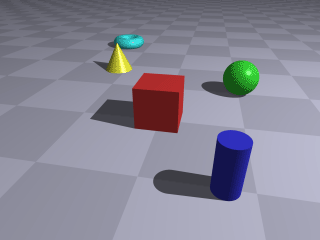 | ||
Wiggle stereoscopy is an example of stereoscopy in which left and right images of a stereogram are animated. This technique is also called wiggle 3-D or wobble 3-D, sometimes also Piku-Piku (Japanese for "twitching").
Contents
The sense of depth from such images is due to parallax and to changes to the occlusion of background objects. In contrast to other stereo display techniques, the same image is presented to both eyes. Animation can be done in a web browser with an animated GIF image, Flash animation, or JavaScript program.
Advantages and disadvantages
Wiggle stereoscopy offers the advantages that no glasses or special hardware is required; most people can perceive the effect more quickly than when using cross-eyed and parallel viewing techniques. Furthermore, it offers stereo-like depth also to people with limited or no vision in one eye.
Disadvantages of wiggle stereoscopy are that it does not provide true binocular depth perception; it is not suitable for print media, being limited to displays that can alternate between the two images, and it is difficult to appreciate details in images that are constantly in motion.
Number and timing of images
Most wiggle images use only two images, yielding a jerky image. A smoother image can be composed by using several intermediate images and using the left and right images as end images of the image sequence. If intermediate images are not available, approximate images can be computed from the end images using techniques known as view interpolation. The two end images may be displayed for a longer time than the intermediate images to allow inspection of details in the left and right images.
Another option for reducing the impression of jerkiness is to reduce the time between the frames of a wiggle image.
Perception
The sense of depth from wiggle 3-D images is due to parallax and to changes to the occlusion of background objects.
Although wiggle stereoscopy permits the perception of stereoscopic images, it is not a "true" three-dimensional stereoscopic display format in the sense that wiggle stereoscopy does not present the eyes with their own separate view each.
The apparent stereo effect results from syncing the timing of the wiggle and the amount of parallax to the processing done by the visual cortex. Three or five images with good parallax may produce a better effect than simple left and right images.
Wiggling works for the same reason that a transitional pan (or tracking shot) in a film provides good depth information: the visual cortex is able to infer distance information from motion parallax, the relative speed of the perceived motion of different objects on the screen. Many small animals bob their heads to create motion parallax (wiggling) so they can better estimate distance prior to jumping.
